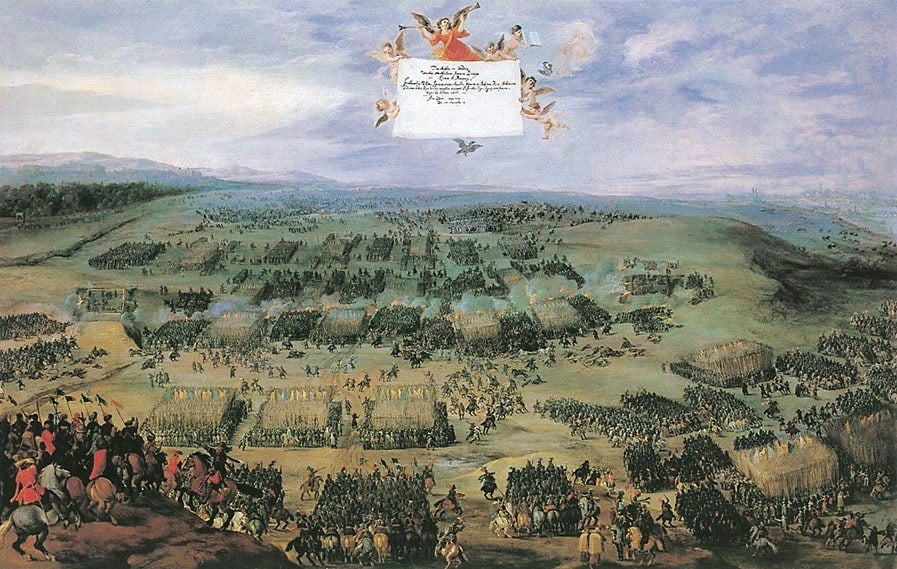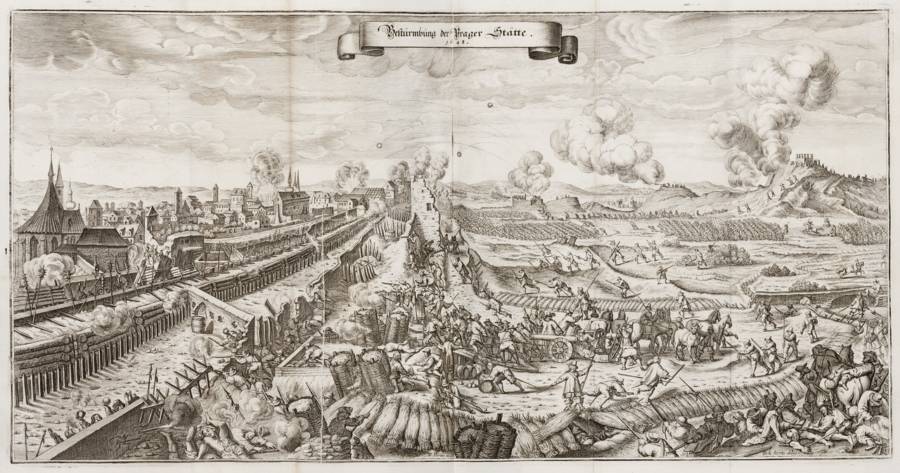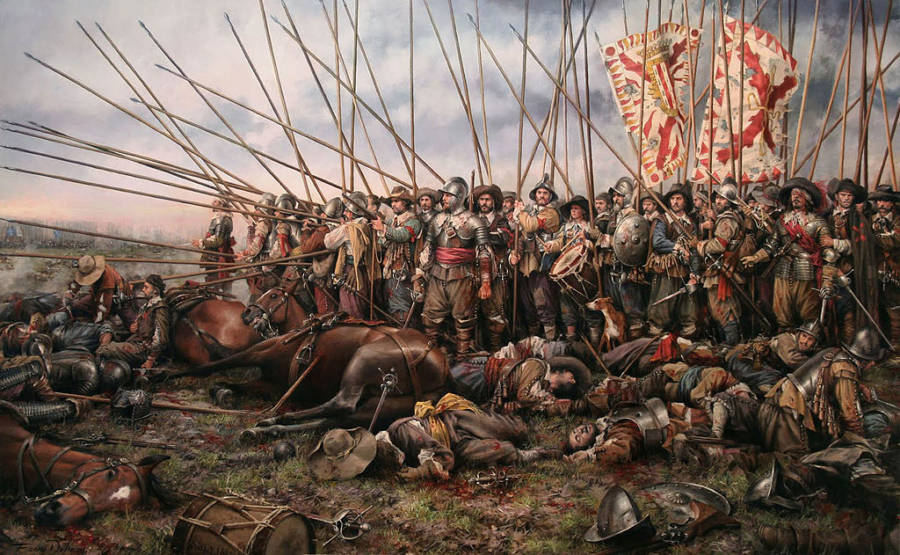That Time Europe Set Itself On Fire

Pieter Snayers/Wikimedia CommonsThe Battle of White Mountain, 1620.
One of the few “nice” things about America’s Civil War was how decisive it was. Several issues got settled for good during four years of hostilities. The war killed the idea that the Union could be dissolved, and it was equally decisive on the subjects of slavery and westward expansion. The United States of 1866 was a vastly different country than it had been in 1860.
The same can’t be said for most of Europe in the early 17th century, where the Thirty Years’ War inflicted appalling devastation, mostly in Germany, as a holy war that ended with every belligerent pretty much exactly where they began — minus about 8 million people, most of them civilians.

Wikimedia CommonsThe Swedish siege of Prague, 1648.
In 1618, the Protestant Reformation was 101 years old, and multiple European states had adopted one of the radical new Protestant faiths in preference to their old Catholic allegiance to Rome. These states included Calvinist Switzerland and Holland, as well as the northern states of the Holy Roman Empire, principally Prussia.
Other countries, notably France and Spain, had fought the change and even purged native Protestants in gory pogroms like the French St. Bartholomew’s Day massacre of 1572. The southern states, led by Austria, also supported the Catholic Church against their fellow Germans.
The stage was set for a final reckoning to decide Europe’s religious future, and it was guaranteed to be fought on the fault line in Germany.

Augusto Ferrer-Dalmau/Wikimedia CommonsThe Battle of Rocroi, 1643.
Indeed, what eventually became a Europe-wide conflict started out as, and largely remained, a civil war within Germany. That conflict started when the Hapsburg King Ferdinand II became king of Bohemia in 1617, and immediately cracked down on Protestant heresy in his realm.
Local Protestants rioted and temporarily overthrew him, after which the Pope made Ferdinand leader of the entire Holy Roman Empire with a mandate to crush the Protestants forever. Meanwhile, Protestant Saxony, along with the northern Protestant Alliance, joined Bohemia in revolt against the Catholic League, and the war was on.
Advantage seesawed between factions for decades. Every time one side started to win, a foreign power would invade to keep the fires stoked. First Sweden, and then Austria, France, Spain, England, and even at one point Orthodox Russia and the Muslim Ottomans, dove in, ensuring that the war would be as destructive and violent as possible.
Ultimately, millions of Germans died, enough to decrease the population of the German states by a whopping 40 precent. When everybody had had enough, in 1648, the Treaty of Westphalia divided Europe between Catholics and Protestants, with each country’s ruler free to set his own state religion. In other words, despite the carnage, nobody won anything valuable and nothing important got resolved.
Next, allow these haunting American Civil War photos to reveal the U.S. during its darkest hour. Then, have a look at these Syrian Civil War photographs that depict the most brutal domestic conflict in progress today.





